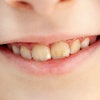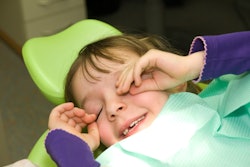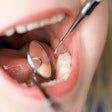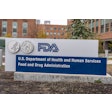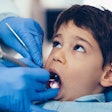Multiple factors like age, where dental treatment occurred, and having a stay-at-home mother, may affect a child’s level of dental fear, according to a study recently published in Health Science Reports.
Therefore, more information in this area is needed to aid in decreasing children's dental fear and preventing the negative consequences in the long term, the authors wrote.
“Our study has made a comprehensive conclusion regarding dental fear and anxiety symptoms and the effect of various background variables on DF (dental fear),” wrote the authors, led by Pegah Farzanegan of Babol University of Medical Sciences in Iran (Health Sci Rep, May 26, 2025, Vol. 8:5, 70879).
To explore risk factors associated with dental fear, a study including 290 children ages 8 to 12 who underwent routine dental visits between October 23, 2021, and May 20, 2022, was conducted. The Children's Fear Survey Schedule-Dental Subscale (CFSS-DS) measured dental fear and the Spence Children's Anxiety Scale (SCAS) assessed general anxiety symptoms, the study’s authors wrote.
The CFSS-DS includes 15 items rated on a scale from 1 to 5, with a total score of 38 or higher indicating significant dental fear. The SCAS contains 44 items covering six anxiety domains, such as social phobia and separation anxiety. Children rated each item on a four-point scale based on how often they experienced each symptom.
There were significant correlations between dental fear and both the child's age (p = 0.019) and the location of treatment (p = 0.002). As children got older, their average dental fear scores tended to decrease, they wrote.
Furthermore, those treated in pediatric dental offices showed higher levels of dental fear than those treated in general dental clinics. Additionally, children with stay-at-home mothers had lower dental fear compared to those with employed mothers (odds ratio = 0.380, confidence interval CI = 0.989 to 0.047, p = 0.047).
The study, however, had limitations. The findings were based on a convenience sample, which may limit how well they reflect the population at large, they added.
“Increasing our knowledge and information in this field can help us reduce children's dental fear and prevent the negative consequences in the long term,” Farzanegan and colleagues wrote.




